The Burren is botanically unique, for there is nowhere else in the world where arctic, alpine and Mediterranean plants grow together and at low altitude. We do find in Britain that there are places where arctic/alpine plants have survived the ice age, but they are rocky, inaccessible and rare.On the Burren the pre-ice age flora was Lusitanian, similar to the flora of Portugal, and some managed to cling on during the cold period, but alpine/arctic flora arrived during the ice-age and managed to hold on as relict species after the ice had gone.
Alpine flora are represented by the abundant mountain avens, [Dryas octopetala], which vie with the flourishing bloody cranesbill [Geranium sanguineum] white contrasting with the cranesbill's red. In Spring purple orchids and blue gentians add to the rainbow of colours that flaunt themselves in the grikes. Birdsfoot trefoil is also common and provides food for the butterflies.The beautiful, two-lipped white trumpet-shaped florets of eyebright are mixed in with other flowers, for eyebright [Euphrasia] is a semi-parasite which attaches itself to the roots of other plants to tap their nutrients, but it does need a lime-rich soil, which it finds in the grikes.
Trees are rare and quite stunted. Often found is juniper and also dwarf hazel. Juniper, once common in the British Isles, is now becoming rare due to loss of moorland habitat, so the Burren is a precious redoubt for it. The hazel is self-seeded, as no-one plants trees on these wind-challenged lands, but at least it gets a chance to seed, as hazel in England is subject to the predations of the American import, the grey squirrel, which gobbles up the nuts. But there are no grey squirrels in Ireland, and if there were, the Burren has resident pine martens, whose favourite lunch is grey squirrel, so it looks as if the hazel is safe for now. There is some scrubby deciduous woodland on some shaded slopes on the east of the area.
In places you find the occasional turlough [Irish for dry lake] which is a lough that only fills in wet weather and drains in dry conditions. Around these you find a standard wetland flora, including wild mint and watercress,especially when they are near a small bed of clay that enables boggy conditions to develop. The loughs are blessed with a fauna of amphibians, such as newts and frogs.
In summer butterflies luxuriate: Blue, small copper, fritillaries, red admiral, peacock and many others, including some rare ones blown in from warmer climes.Visitors might see the rare Burren green moth, only discovered in the 1940s.
Mountain hares are ever-present and while in the past they used to be hunted by people in need of food, there is now a cultural acceptance that no one should shoot them, but this does not save them from predatory raptors, such as kestrels. A wide range of bird, including snipe and woodcock can be seen at times.


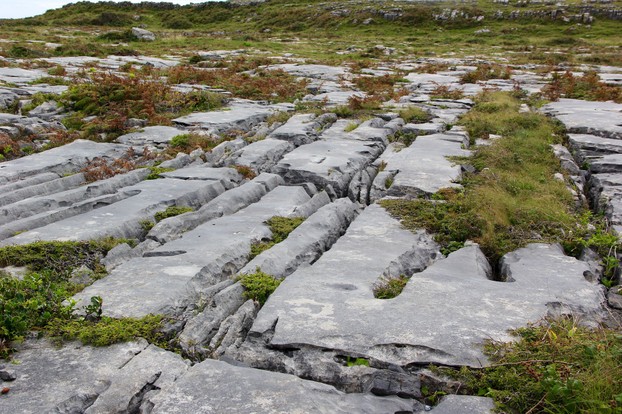



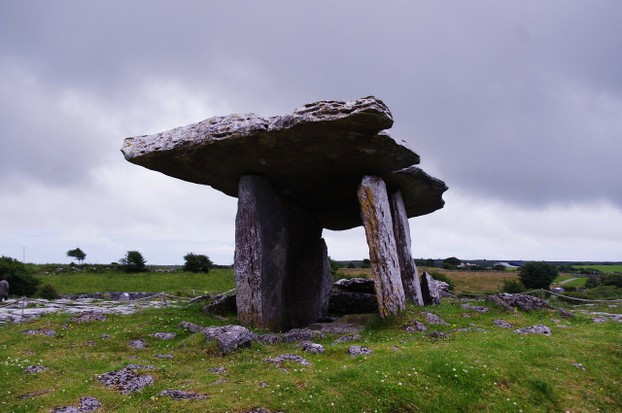
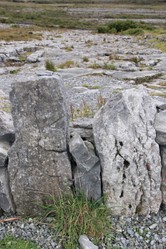

 Women of the Gospelson 10/11/2025
Women of the Gospelson 10/11/2025
 Religious Gardenson 08/25/2025
Religious Gardenson 08/25/2025
 Doctor of the Church: John Henry Newmanon 08/03/2025
Doctor of the Church: John Henry Newmanon 08/03/2025
 Restoring the Palm Houseon 07/16/2025
Restoring the Palm Houseon 07/16/2025

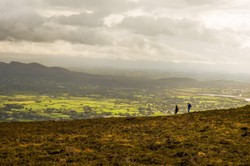
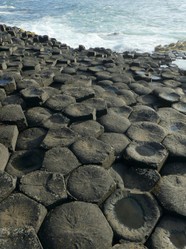
Comments
It is rare to find much evidence of violence, but it is still present.
Thank you!
That's a bit disappointing, a bit sobering to mull "evidence of physical violence in The English neolithic."
Might that be common or rare England-wise and elsewhere?
What Neolithic so cities were like we know not, but collectivist so cities are suggested by the collective efforts needed for megalith building, but wars did occur, as we have found evidence of physical violence in The English neolithic
Lizzie Wade, in her article It wasn't just Greece: archaeologists find early democratic societies in the Americas March 15, 2017, for Science online, associates democratic government with collective-ruled societies between 500 BCE and 100 BCE.
The above wizzley about Burren island calls to my mind collective action in a harsh environment.
Then Isabelle Huppert's character in L'Avenir (anglicized as Things to come) draws up Jean-Jacques Rousseau explaining that "S’il y avait un people de dieux il se gouvernerait démocratiquement. Un gouvernement si parfait ne convient pas à des hommes."
The aforementioned quote finds the perfectly democratic self-government of godly people inconsistent with human ways.
Ancient Ireland looks, in my hindsight, collective, democratic and godly socio-economically and socio-politically.
Might that be the way ancient Irish societies manifest themselves east-pond-ward?
Or might close inspection suggest the Rousseau-ian conclusion?
Yes, that is the common usage.
The second paragraph to the last subheading, Experiencing the land, advises us that "You step lightly over grikes, looking down at the abundance at your feet, the shy plant communities huddled in their cosy world."
Online sources defined grikes as cracks or crevices. Is that a common-use verb among eastern-side ponders?
Ireland can have a difficult climate, but the Burren, which is by Galway Bay, receives warm and moist South Westerly winds at times. I have stood on the shores of the bay and enjoyed the warm, moist wind. But you are right, warm climates are so appealing.I feel this today, as Britain suffers icy winds and snow sweeping down from the Arctic. Roll on Summer!
I do like the atmosphere of desolate places, but not for long. I like sunshine and warm temperatures the best.
You have always had strong feelings for Galway and Limerick [where our Father's relatives originated] but I prefer the North West of Ireland, firstly because I once dwelt there in Cavan and secondly because I married into a family rooted in County Mayo. Thus I support Mayo in Gaelic football, they are the family team. I have also visited Connemara.
Yes The Burns and Burkes are Connemara and Gort in Galway.
I have been to Gort and visited the church and pub there. Connemara is magnificent. I have been there too.
The Limerick ancestral home for the Mannings are Castleconnell and Croom .
Regarding the Burren, ... so sez little sister .. you have no feelings anyway ... :)